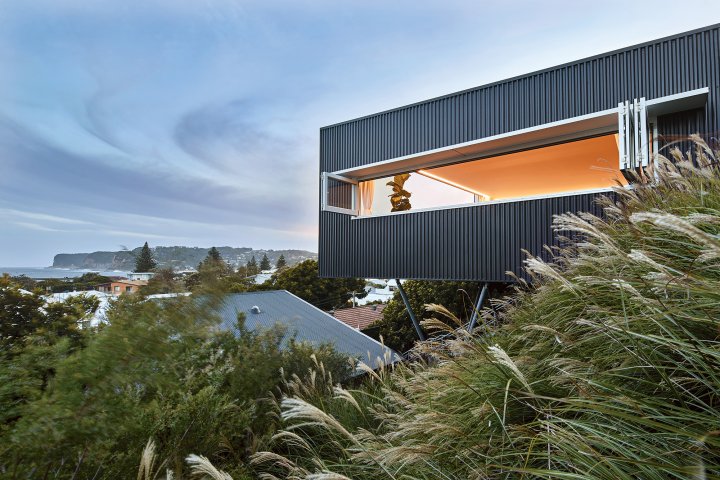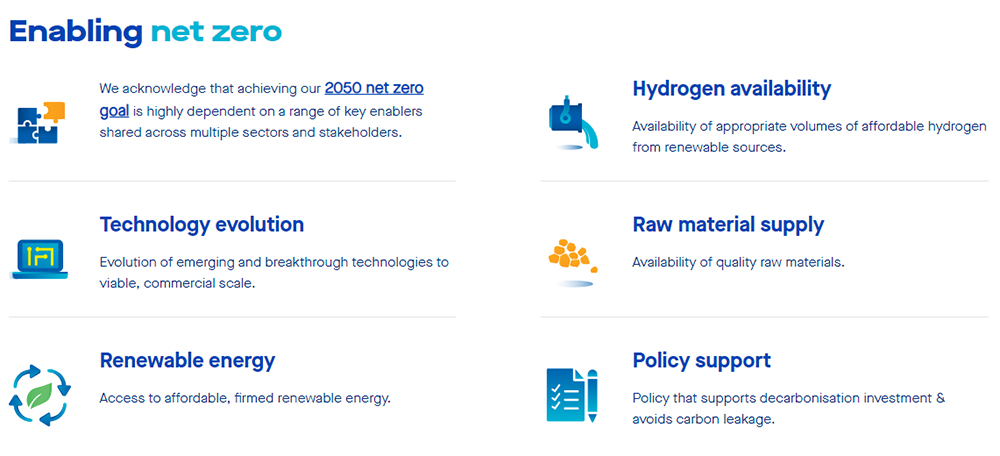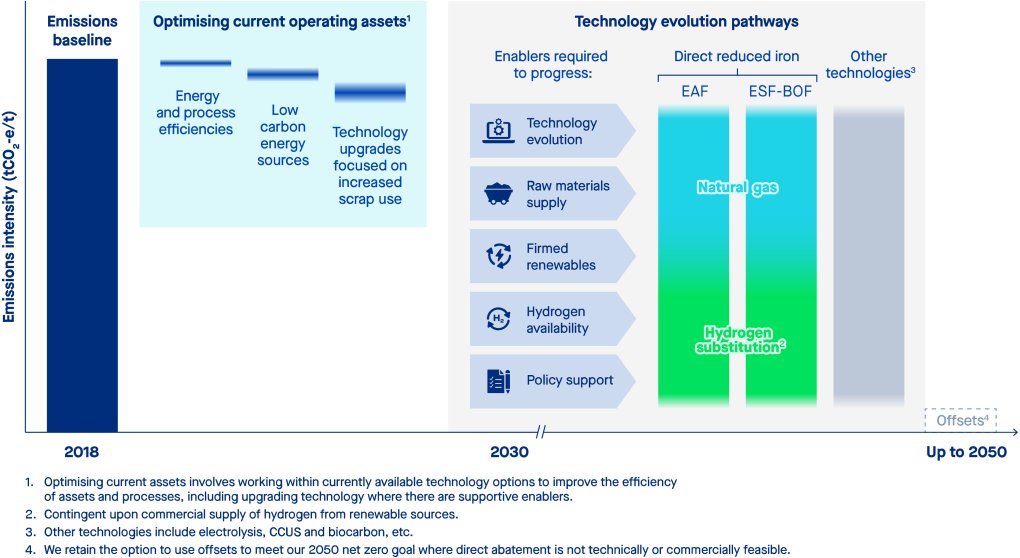Climate Action

Our Vision for BlueScope in Australia
Our vision for BlueScope in Australia is to be a vibrant, modern manufacturer, embodying progress, innovation and sustainability.
Our approach
Climate action is key to Our Purpose and is a core element of our Corporate Strategy: building a pathway to low emission-intensity iron and steelmaking in Australia is a key priority for our business.
Climate Action – global goal and targets
The following goal and targets apply to BlueScope’s global operations, including steelmaking and non-steelmaking operations in Australia.
^ Applies to our Scope 1 and 2 emissions, relative to a 2018 baseline, across our midstream or non-steelmaking activities
^^ The non-steelmaking target applies to our midstream activities that include our cold rolled, metal coating and painting lines and long and hollow products. It excludes our downstream activities.

Global decarbonisation pathway
Our global decarbonisation pathway outlines the steps we plan to take to meet our 2030 GHG targets and net zero 2050 goal.

Taking action in Australia
Between now and 2030
To meet our 2030 reduction targets, we’re continuing to optimise current operating assets across our Australian footprint.
Maximising the use of scrap steel at Port Kembla Steelworks remains a key focus. We have increased scrap content in the steelmaking process from approx. 21.5% to 25% from 2019 to 20221. Given its cooling effect, current levels of scrap in the steelmaking process are approaching their technical maximum limit. Our aim is to increase scrap content to 30% by 2030 by investigating ways to pre-melt scrap, along with a number of asset modifications. This additional scrap content has the potential to reduce emissions intensity by ~6%.
We are also trialling the use of biochar, produced from sustainable biomass. In 2023 we successfully conducted biochar trials at Port Kembla Steelworks, supported by ARENA2. In these trials we:
- Tested how biochar would perform as a replacement for Pulverised Coal Injection (PCI) coal in the blast furnace
- Achieved up to 30% PCI coal replacement.
We are currently working with several sustainable biochar supply projects within Australia, given there is no industrial scale biochar supply chain in Australia.
- Between FY19 and FY22
- This Project received funding from the Australian Renewable Energy Agency (ARENA) as part of ARENA’s Advancing Renewables Program. The views expressed herein are not necessarily the views of the Australian Government, and the Australian Government does not accept responsibility for any information or advice contained herein.
2030 and beyond
BlueScope is focussed on developing a clear pathway to low emissions ‘primary’ steelmaking in Australia. We believe Direct Reduced Iron (DRI) is the most prospective technology to decarbonise our Australian business. We are investigating accelerated technology developments in natural gas Direct Reduced Iron (DRI) as a transitional pathway to using green hydrogen to produce lower emissions steel.
In February 2024 BlueScope announced a new framework agreement with Rio Tinto and BHP to accelerate the decarbonisation of steelmaking by jointly investigating the development of the country’s first ironmaking electric smelting furnace3 (ESF) pilot plant.
“We believe the development of ESF technology is key to unlocking Australia’s unique advantages in this decarbonisation journey – and, more importantly, has the potential for wider adaptation across the global steel industry. We believe that this collaboration where we can contribute BlueScope’s unique experience in operating an ESF will be key to cracking the code for Pilbara ores in low emission-intensity ironmaking.” Tania Archibald, Chief Executive Australian Steel Products
Further information
